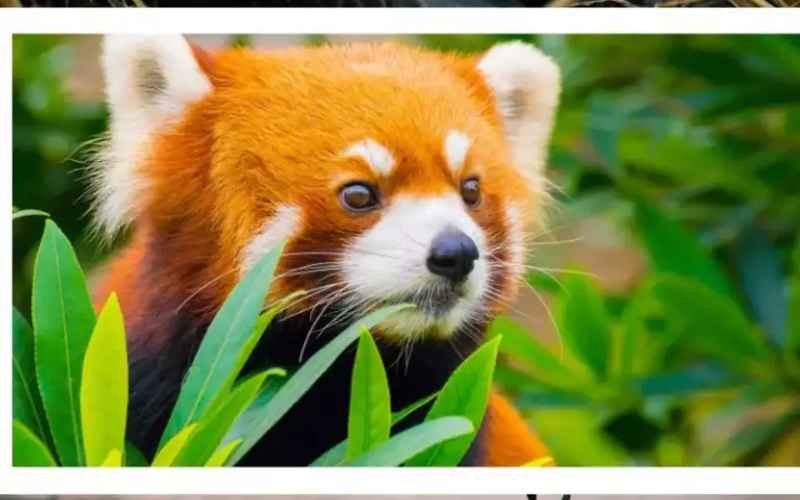Keeping exotic animals as pets is a contentious issue worldwide, and India is no exception. While many may find the idea of owning exotic pets appealing, it’s crucial to understand the legalities and ethical implications involved. India has stringent laws under the Wildlife Protection Act of 1972 and the Prevention of Cruelty to Animals Act, which aim to protect endangered species and ensure humane treatment of animals.

1. Lions and Tigers (Big Cats):
Lions and tigers are among the most majestic creatures on Earth, known for their impressive size, strength, and fierce beauty. Despite their allure, these big cats are unsuitable as pets due to their specialized needs and the inherent dangers they pose.
In India, lions and tigers are protected under Schedule I of the Wildlife Protection Act, 1972. This legal classification prohibits private ownership without specific permits, highlighting the government’s recognition of their endangered status and the risks associated with their captivity.
Keeping lions or tigers as pets poses significant risks both to humans and to the conservation of wildlife. These animals are apex predators, adapted to thrive in the wild with specific dietary, environmental, and behavioral requirements that cannot be met in domestic settings. Attempts to keep them can result in physical harm to humans due to their size and natural instincts. Moreover, the illegal trade in big cats undermines conservation efforts aimed at protecting their dwindling populations in the wild.
Therefore, while lions and tigers may captivate our imagination, their rightful place is in the wild, where they contribute to biodiversity and ecosystem balance. Efforts should focus on conserving their natural habitats and ensuring their survival rather than attempting to domesticate or exploit them for personal pleasure or profit.
2. Elephants:
Elephants have profound cultural and religious significance in India, where they are revered for their intelligence, strength, and gentle nature. Despite this cultural reverence, owning elephants as pets is strictly regulated under Indian law.
The Wildlife Protection Act of 1972 categorizes elephants as Schedule I animals, affording them the highest level of protection. This legal framework prohibits the capture, ownership, and trade of elephants without specific authorization from the government. These measures are designed to prevent the exploitation of elephants for commercial purposes and to ensure their well-being in natural or suitable habitats.
Elephants require vast spaces to roam, specific dietary needs, and social interactions that cannot be adequately provided in domestic environments. Attempts to keep them as pets or in captivity often lead to physical and psychological harm, depriving them of their natural behaviors and social structures.
Instead of being kept as pets, efforts are directed towards conservation initiatives that promote their welfare in protected areas and reserves. These efforts aim to mitigate human-elephant conflicts, protect their habitats, and uphold their cultural importance while respecting their status as wild animals deserving of protection under law.
3. Monkeys:
Monkeys in India face significant challenges due to illegal capture and trade for the pet market. Despite their sometimes playful and curious demeanor, these animals are protected under the Wildlife Protection Act, which strictly prohibits their capture and trade. This legal protection reflects the recognition of their importance to ecosystems and the dangers posed by their exploitation.
Keeping monkeys as pets not only violates the law but also presents serious risks. Monkeys can carry zoonotic diseases that can be transmitted to humans, posing health hazards. In addition, their natural behavior and social needs are difficult to meet in a domestic setting, leading to behavioral issues and stress for the animals.
Conservation efforts focus on preserving monkey populations in their natural habitats, where they play crucial roles in forest ecosystems by dispersing seeds and contributing to biodiversity. Efforts also address the prevention of illegal trade and the rehabilitation of rescued monkeys to reintroduce them to the wild when possible.
4. Bears:
Bears are majestic animals that face severe exploitation when kept as pets or for traditional practices in India. The Wildlife Protection Act of 1972 categorizes bears under Schedule I, providing stringent protection against their capture, ownership, and trade. This legal framework aims to safeguard bears from cruel practices such as defanging and declawing, which are often inflicted to make them more manageable or for entertainment purposes.
Keeping bears as pets not only violates legal protections but also subjects these animals to severe physical and psychological harm. Bears are wild animals with complex social and behavioral needs that cannot be met in captivity. Such practices contribute to their suffering and threaten their survival in the wild.
Conservation efforts in India focus on rescuing and rehabilitating bears that have been illegally captured or mistreated. Organizations work to educate the public about the importance of protecting bears and their habitats, promoting responsible wildlife tourism, and supporting policies that enforce wildlife protection laws.
By respecting these legal protections and supporting conservation initiatives, individuals can help ensure that bears are not subjected to exploitation and can thrive in their natural environments, contributing to biodiversity and ecological balance.
5. Crocodiles and Alligators:
Crocodiles and alligators are apex predators that play crucial roles in maintaining ecosystem balance. In India, these reptiles are protected under the Wildlife Protection Act, which strictly regulates their ownership, capture, and trade. This legal framework acknowledges their importance to natural ecosystems and aims to prevent their exploitation for commercial or personal purposes.
Keeping crocodiles or alligators as pets poses significant risks both to humans and to the environment. These animals are powerful predators with specialized needs that are challenging to meet in captivity. They require large and specific habitats with access to water, appropriate temperatures, and diets that replicate their natural hunting behaviors.
The dangers of keeping crocodiles or alligators as pets include safety hazards due to their formidable size and strength, as well as potential environmental implications if they were to escape into local ecosystems. Such scenarios could disrupt local wildlife populations and pose risks to human communities.
Conservation efforts focus on preserving natural habitats for crocodiles and alligators, promoting awareness about their ecological importance, and enforcing laws that protect them from illegal trade and exploitation. By respecting these protections and supporting habitat preservation initiatives, individuals contribute to the conservation of these fascinating reptiles and the ecosystems they inhabit.
6. Pangolins:
Pangolins, often referred to as “scaly anteaters,” face severe threats due to illegal wildlife trafficking driven by demand for their scales and meat. Globally, they are one of the most trafficked mammals, highlighting the urgent need for conservation efforts.
In India, all species of pangolins are protected under Schedule I of the Wildlife Protection Act, 1972. This legal designation prohibits their capture, trade, and ownership without specific government authorization. These protections are crucial in combating the rampant illegal wildlife trade that threatens pangolin populations.
The demand for pangolin scales, believed in some traditional medicines to have medicinal properties, has fueled their illegal trade across international borders. This trade not only jeopardizes pangolin populations but also undermines efforts to conserve these unique creatures.
Conservation initiatives in India focus on several fronts, including:
- Law Enforcement: Strengthening enforcement efforts to combat wildlife trafficking networks and apprehend poachers and traffickers.
- Awareness and Education: Raising awareness among local communities, consumers, and stakeholders about the illegal wildlife trade and the importance of pangolin conservation.
- Rescue and Rehabilitation: Supporting efforts to rehabilitate rescued pangolins and, when possible, release them back into protected habitats.
By supporting these conservation efforts and respecting legal protections, individuals can contribute to safeguarding pangolins and ensuring their survival in the wild. Efforts to combat illegal wildlife trade are essential to protecting not just pangolins but also biodiversity and the health of ecosystems they inhabit.
7. Indian Star Tortoise:
The Indian star tortoise is renowned for its strikingly beautiful shell pattern, making it a popular choice among exotic pet enthusiasts. Despite its appeal, the capture and trade of Indian star tortoises are strictly prohibited under the Wildlife Protection Act, 1972. This legal framework is essential to safeguarding wild populations from the pressures of illegal trade and exploitation.
Legal Protection
The Indian star tortoise is listed under Schedule IV of the Wildlife Protection Act, which provides significant protection against its capture, trade, and ownership. The law aims to ensure that these tortoises remain in their natural habitats, contributing to biodiversity and ecological balance.
Risks of Keeping as Pets
Keeping Indian star tortoises as pets can have several negative consequences:
- Threat to Wild Populations: The illegal pet trade reduces the number of tortoises in the wild, threatening the species with population decline and potential extinction.
- Health and Welfare Issues: Tortoises removed from their natural environment often suffer from stress, malnutrition, and diseases due to inadequate care and unsuitable living conditions in captivity.
- Legal Consequences: Individuals found in possession of Indian star tortoises without proper authorization face legal penalties, including fines and imprisonment.
Conservation Initiatives
Efforts to protect the Indian star tortoise focus on several key areas:
- Awareness and Education: Conservation organizations work to educate the public about the legal and ethical implications of keeping wild animals as pets. Awareness campaigns highlight the importance of preserving wild populations and the risks associated with illegal trade.
- Rescue and Rehabilitation: Confiscated tortoises are often taken to rehabilitation centers where they receive proper care and treatment. When possible, rehabilitated tortoises are released back into protected habitats to enhance wild populations.
- Law Enforcement: Strengthening the enforcement of wildlife protection laws is crucial. This includes monitoring and patrolling areas known for illegal trade activities and implementing strict penalties for offenders.
Responsible Pet Ownership
For those interested in keeping tortoises as pets, it is important to consider alternative species that are legally available and bred in captivity. Responsible pet ownership involves:
- Research: Understanding the specific needs and care requirements of the chosen species.
- Legal Compliance: Ensuring that the species is legally available and sourced from reputable breeders.
- Commitment: Providing a long-term commitment to the well-being of the pet, including proper housing, diet, and veterinary care.
By promoting responsible pet ownership and supporting conservation initiatives, individuals can contribute to the protection of the Indian star tortoise and help ensure its survival for future generations.
8. Owls and Birds of Prey:
Owls and other birds of prey hold a significant place in ecosystems, acting as top predators that help control populations of rodents and other small animals. In India, these majestic birds are protected under the Wildlife Protection Act, 1972, which strictly prohibits their capture, trade, and ownership without proper permits. This protection is vital to conserving their populations and ensuring ecological balance.
Legal Protection
The Wildlife Protection Act places owls and birds of prey under Schedule I and II, providing them with the highest level of protection. This legislation aims to prevent their exploitation and ensure their survival in the wild.
Cultural Beliefs and Illegal Capture
In India, owls are often associated with various superstitions and cultural beliefs. Some communities believe owls possess magical properties or bring good luck, leading to their capture for use in traditional rituals and practices. This cultural significance has unfortunately contributed to their illegal capture and trade.
Risks and Consequences
The illegal capture and trade of owls and birds of prey pose several risks:
- Population Decline: Removing these birds from their natural habitats disrupts local ecosystems and can lead to a decline in their populations.
- Health and Welfare: Captured birds often suffer from stress, malnutrition, and injuries due to inadequate care and handling.
- Legal Penalties: Individuals involved in the illegal trade of protected species face severe legal consequences, including fines and imprisonment.
Conservation Efforts
Conservation initiatives focus on multiple strategies to protect owls and birds of prey:
- Law Enforcement: Strengthening the enforcement of wildlife protection laws to prevent illegal capture and trade. This includes monitoring markets, patrolling habitats, and conducting raids on illegal traders.
- Rescue and Rehabilitation: Rescued birds are taken to rehabilitation centers where they receive medical care and treatment. Efforts are made to rehabilitate and release them back into their natural habitats whenever possible.
- Public Awareness: Educating the public about the importance of conserving birds of prey and the legal implications of capturing and trading them. Awareness campaigns also address cultural beliefs and promote alternative practices that do not harm wildlife.
- Research and Monitoring: Conducting research to monitor populations of owls and birds of prey, understanding their ecological roles, and developing effective conservation strategies.
Responsible Wildlife Interaction
For those interested in observing or studying owls and birds of prey, it is important to do so responsibly:
- Birdwatching: Engaging in ethical birdwatching practices, such as using binoculars and cameras to observe birds from a distance without disturbing them.
- Supporting Conservation: Contributing to conservation organizations and initiatives that work to protect these species and their habitats.
- Education and Advocacy: Promoting awareness about the importance of these birds in ecosystems and advocating for their protection.
By respecting legal protections and supporting conservation efforts, individuals can help safeguard owls and birds of prey, ensuring they continue to thrive in their natural environments and maintain their critical roles in ecosystems.
9. Dolphins and Whales:
Dolphins and whales, known for their intelligence and complex social behaviors, are vital components of marine ecosystems. In India, these marine mammals are protected under various wildlife laws and international agreements, emphasizing the importance of their conservation.
Legal Protection
Dolphins and whales are safeguarded by Indian wildlife laws, including the Wildlife Protection Act, 1972, which prohibits their capture, ownership, and trade without specific authorization. Additionally, India is a signatory to international agreements such as the Convention on International Trade in Endangered Species of Wild Fauna and Flora (CITES) and the International Whaling Commission (IWC), which aim to protect marine mammals from exploitation and ensure their conservation.
Risks of Capture and Trade
The capture, trade, and ownership of dolphins and whales pose significant risks:
- Health and Welfare: Captured marine mammals often suffer from stress, malnutrition, and diseases due to inadequate care and confinement in unnatural environments.
- Conservation Threats: Removing dolphins and whales from their natural habitats disrupts social structures and can lead to population declines, threatening the survival of these species.
- Ecosystem Imbalance: Dolphins and whales play crucial roles in maintaining the health of marine ecosystems. Their removal can have cascading effects on the balance of marine life.
Conservation Efforts
Conservation initiatives for dolphins and whales focus on several key areas:
- Habitat Preservation: Protecting and preserving marine habitats is essential for the survival of dolphins and whales. This includes establishing marine protected areas, regulating fishing practices, and mitigating pollution.
- Research and Monitoring: Conducting research to understand the behavior, ecology, and population dynamics of dolphins and whales. Monitoring their populations helps identify threats and develop effective conservation strategies.
- Legislation and Enforcement: Strengthening and enforcing laws that protect marine mammals from illegal capture and trade. Ensuring compliance with international agreements and conventions is crucial.
- Public Awareness: Raising awareness about the importance of dolphins and whales in marine ecosystems and the threats they face. Educational programs and campaigns can foster a sense of stewardship and encourage responsible behavior.
- Stranding Response: Establishing and supporting networks for responding to stranded dolphins and whales. Providing timely rescue and rehabilitation can increase the chances of survival for stranded individuals.
Responsible Interaction
For those interested in observing or interacting with dolphins and whales, responsible practices are essential:
- Ecotourism: Participating in responsible whale and dolphin watching tours that follow ethical guidelines to minimize disturbance to the animals and their habitats.
- Support Conservation Organizations: Contributing to organizations that work to protect marine mammals and their environments through donations, volunteering, or advocacy.
- Reduce Pollution: Taking steps to reduce plastic use, properly dispose of waste, and support policies aimed at reducing marine pollution.
By respecting legal protections, supporting conservation initiatives, and promoting responsible interaction, individuals can contribute to the protection and preservation of dolphins and whales, ensuring their continued presence in healthy marine ecosystems.
10. Mongoose:
Mongooses are agile and skilled predators, known for their ability to hunt snakes and other small animals. Despite their fascinating abilities, they face significant conservation challenges in India, where their capture, trade, and ownership are restricted under the Wildlife Protection Act of 1972. These regulations aim to address conservation concerns and the potential risks associated with keeping mongooses in domestic settings.
Legal Protection
Mongooses are protected under Schedule II of the Wildlife Protection Act, which makes their capture, trade, and ownership illegal without specific permits. This legal framework is crucial for ensuring that mongoose populations are not depleted by illegal trade or kept in environments where their natural behaviors cannot be expressed.
Risks of Keeping as Pets
Owning mongooses as pets poses several risks:
- Behavioral Challenges: Mongooses are wild animals with specific behavioral needs and instincts that are difficult to satisfy in captivity. They require space to roam and hunt, which domestic settings typically cannot provide.
- Health and Safety: Mongooses can carry diseases that can be transmitted to humans and other animals. Additionally, their aggressive nature, especially when stressed or threatened, can pose safety risks to their owners.
- Conservation Concerns: Capturing mongooses from the wild for the pet trade reduces their populations and disrupts local ecosystems where they play essential roles as predators.
Conservation Efforts
Efforts to conserve mongoose species in India focus on several key areas:
- Habitat Conservation: Protecting and preserving the natural habitats of mongooses is crucial for their survival. This includes maintaining forests, grasslands, and other ecosystems where they live and hunt.
- Mitigating Human-Wildlife Conflict: Addressing conflicts between humans and mongooses, particularly in agricultural areas where mongooses may prey on poultry or other small livestock. Conservation programs work with local communities to develop non-lethal methods of managing these conflicts.
- Public Awareness: Educating the public about the ecological importance of mongooses and the legal protections in place to conserve them. Awareness campaigns can reduce the demand for mongooses as pets and promote respect for wildlife.
- Research and Monitoring: Conducting research to understand mongoose populations, their behaviors, and their roles in ecosystems. Monitoring efforts help track population trends and identify threats to their conservation.
Responsible Interaction
For those interested in learning about or observing mongooses, responsible practices are important:
- Wildlife Viewing: Observing mongooses in their natural habitats through responsible wildlife tourism and ecotourism practices that do not disturb the animals or their environments.
- Support Conservation Initiatives: Contributing to conservation organizations that work to protect mongooses and their habitats through donations, volunteering, or advocacy.
- Avoiding Illegal Trade: Refraining from participating in the illegal pet trade and reporting any suspicious activities to wildlife authorities.
By respecting legal protections, supporting conservation efforts, and promoting responsible interaction with wildlife, individuals can help ensure the survival of mongoose species and maintain the ecological balance they contribute to.
Conclusion:
Understanding the legal restrictions and ethical considerations of owning exotic animals as pets in India is essential for responsible pet ownership and wildlife conservation. By respecting wildlife protection laws, supporting conservation efforts, and promoting awareness, individuals can contribute to safeguarding endangered species and preserving India’s rich biodiversity for future generations. Adopting pets ethically and responsibly ensures their welfare and contributes to sustainable conservation practices.
FAQs About Illegal Pets in India
1. Why are certain animals illegal to keep as pets in India?
Certain animals are illegal to keep as pets in India to protect them from exploitation, ensure their welfare, and conserve endangered species. Laws like the Wildlife Protection Act, 1972, aim to preserve biodiversity and prevent illegal wildlife trade.
2. What is the Wildlife Protection Act, 1972?
The Wildlife Protection Act, 1972, is a comprehensive law in India that provides protection to wild animals, birds, and plants. It aims to ensure ecological and environmental security through the protection of wildlife and their habitats.
3. Can I get a permit to keep exotic pets in India?
While some animals can be kept with special permits, many exotic species, especially those listed under Schedule I of the Wildlife Protection Act, are strictly prohibited. It’s important to check the legal status and obtain necessary permits from the relevant authorities before considering exotic pets.
4. What are the penalties for keeping illegal pets in India?
Penalties for keeping illegal pets in India can include hefty fines and imprisonment. The specific punishment depends on the species involved and the severity of the offense, as outlined in the Wildlife Protection Act and other relevant laws.
5. Are there any exceptions to these laws?
Exceptions are rare and usually apply to licensed zoos, research institutions, or wildlife rehabilitation centers. These entities must obtain proper authorization and comply with stringent regulations to ensure the welfare and conservation of the animals.
6. How can I report illegal wildlife trade or ownership?
You can report illegal wildlife trade or ownership to the Wildlife Crime Control Bureau (WCCB), local forest departments, or law enforcement agencies. Providing detailed information and evidence can help authorities take appropriate action.
7. What should I do if I find an injured or abandoned wild animal?
If you find an injured or abandoned wild animal, contact local wildlife rescue organizations, forest department officials, or veterinary services. Avoid handling the animal yourself, as it may be dangerous or cause further stress and injury to the animal.
8. Are there legal alternatives for pet ownership in India?
Yes, there are many legal and ethical alternatives for pet ownership in India. Consider adopting domesticated animals like dogs, cats, rabbits, or birds from shelters and rescue organizations. Always ensure the animal’s welfare and suitability for your living conditions.
9. How can I contribute to wildlife conservation in India?
You can contribute to wildlife conservation by supporting reputable conservation organizations, participating in awareness campaigns, volunteering for wildlife projects, and advocating for stronger wildlife protection laws. Responsible pet ownership and avoiding illegal wildlife trade also play a crucial role.
10. Where can I find more information about wildlife protection laws in India?
For more information about wildlife protection laws in India, visit the official website of the Ministry of Environment, Forest, and Climate Change (MoEFCC) or the Wildlife Crime Control Bureau (WCCB). These resources provide detailed information on legal provisions, guidelines, and conservation initiatives.
11. Can I adopt rescued wild animals as pets
Rescued wild animals are typically rehabilitated and released back into their natural habitats by wildlife rescue organizations. Adopting them as pets is generally not allowed, as it can hinder their rehabilitation and conservation efforts. It’s best to support these organizations in their mission.
12. What are the ethical considerations of keeping wild animals as pets?
Keeping wild animals as pets raises significant ethical concerns, including their welfare, the risk of mistreatment, and the impact on wild populations. Wild animals have specialized needs that are difficult to meet in a domestic setting, often leading to physical and psychological harm.
13. How can I help combat illegal wildlife trade?
You can help combat illegal wildlife trade by spreading awareness, supporting anti-trafficking organizations, reporting suspicious activities, and refusing to buy products made from endangered species. Advocacy for stronger wildlife protection laws is also crucial.
14. Are there any programs or courses on wildlife conservation I can join?
Yes, many universities and organizations offer programs and courses on wildlife conservation. Look for accredited institutions that provide theoretical and practical knowledge in conservation biology, wildlife management, and related fields.
15. What are some common misconceptions about exotic pets?
Common misconceptions about exotic pets include the belief that they are low-maintenance, safe, or can easily adapt to domestic environments. In reality, exotic pets often require specialized care, can pose safety risks, and may suffer in captivity.
16. Can owning an illegal pet affect biodiversity?
Yes, owning an illegal pet can negatively impact biodiversity. Removing animals from their natural habitats can disrupt ecosystems, reduce genetic diversity, and hinder conservation efforts. It can also contribute to the decline of endangered species.
17. What role do zoos and wildlife sanctuaries play in conservation?
Zoos and wildlife sanctuaries play a crucial role in conservation by providing safe habitats for endangered species, facilitating breeding programs, conducting research, and educating the public about wildlife protection. They often collaborate with conservation organizations globally.
18. How do wildlife protection laws vary across Indian states?
While the Wildlife Protection Act, 1972, is a central law, its implementation can vary across Indian states. Each state has a forest department responsible for enforcing wildlife laws, and additional state-specific regulations may apply. Always check local regulations for precise information.
19. What impact does illegal pet ownership have on public health?
Illegal pet ownership can pose significant public health risks, including the spread of zoonotic diseases (diseases transmitted from animals to humans). Wild animals can carry pathogens that are harmful to humans, emphasizing the importance of adhering to legal and ethical pet ownership practices.
20. Are there international agreements that India adheres to for wildlife protection?
Yes, India is a signatory to several international agreements aimed at wildlife protection, including the Convention on International Trade in Endangered Species of Wild Fauna and Flora (CITES). These agreements help regulate the international trade of endangered species and promote global conservation efforts.















